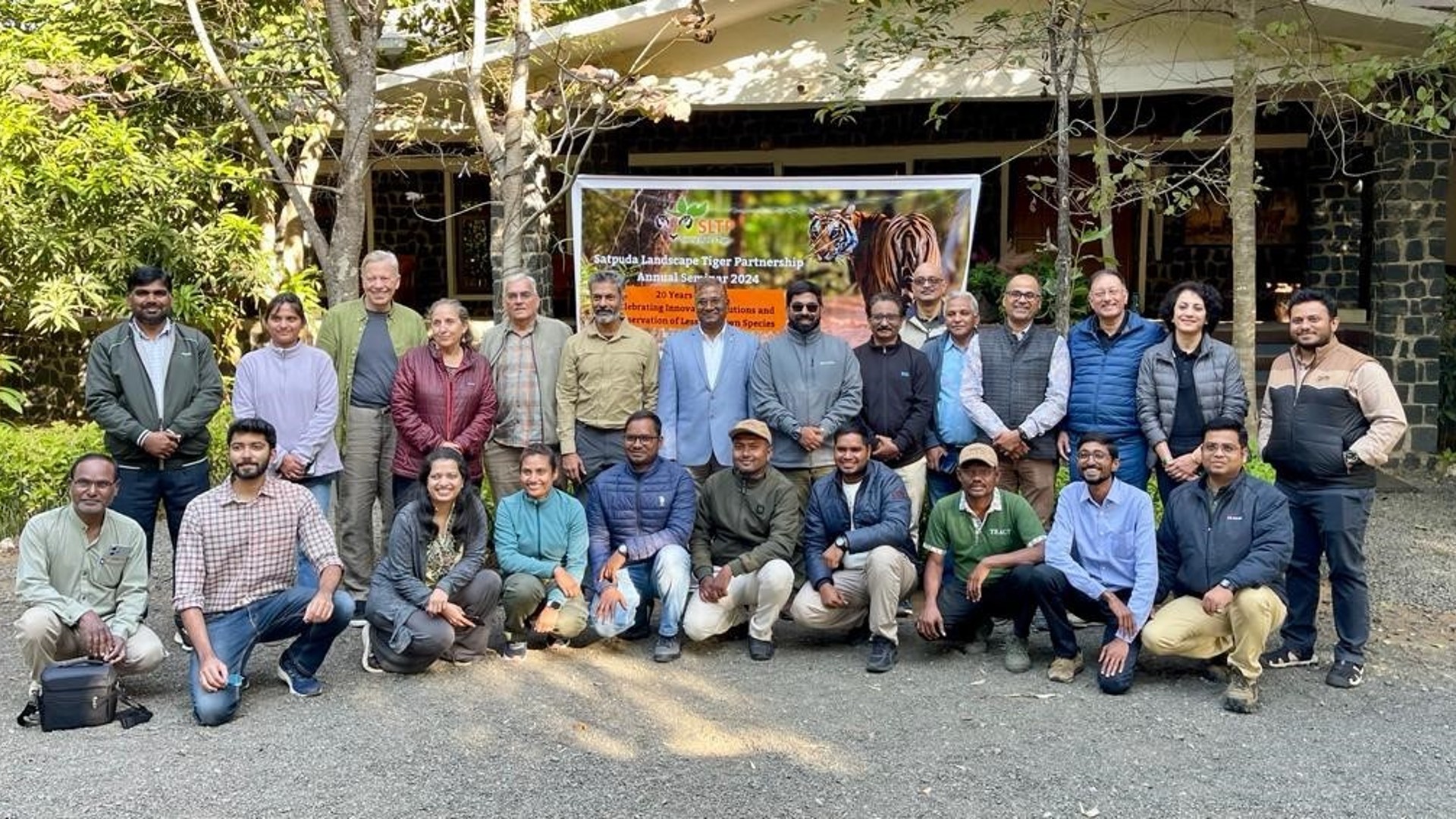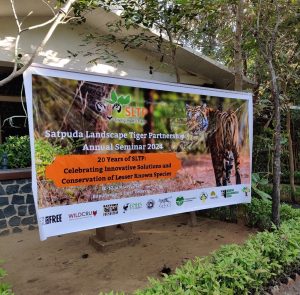Tiger conservation: The next 20 years?
As the Satpuda Landscape Tiger Partnership celebrates 20 years, their annual seminar considered the next two decades of tiger conservation in the forests of Central India.

With support from Born Free, the Satpuda Landscape Tiger Partnership’s (SLTP) annual seminar took place in January in India’s world-renowned Bandhavgarh Tiger Reserve. The seminar is a key event in SLTP’s calendar, providing a platform for in-person discussions of challenges, ideas, and best practices between partners, fellow conservationists and the forest department.
This year’s seminar was even more special as SLTP celebrates 20 years since the project’s inception. A remarkable amount has been achieved during this time – most notably contributing to a doubling of tigers in India since 2006.

But, the work doesn’t stop there. The challenges facing tigers are mounting, and conservation efforts to protect this globally iconic species are as critical as ever. The seminar provided an opportunity not only to discuss and reflect on the last 20 years, but to look ahead at what the next 20 years of tiger conservation in the Satpuda Landscape could look like.
When asked about the main focus of tiger conservation moving forward, Dr Naveen Pandey, from SLTP partner The Corbett Foundation, replied: “It has to be habitat protection. Given the fact that linear projects (such as roads and railways) are going to fragment and divide habitats, the most important area of work has to be habitat protection and restoration”.
Nishikant Kale, President of SLTP partner Nature Conservation Society Amravati, echoed these thoughts, claiming linear projects, as well as other developments, were the biggest threat to tigers currently. When asked about the main focus of tiger conservation in the future, Nishikant replied: “The following two factors are very significant for effective tiger conservation. Firstly, providing sufficiently large patches of undisturbed forest with minimum human pressures. And secondly, maintaining the corridors connecting the protected areas. This cannot be achieved without providing livelihood opportunities and skills training to communities to reduce the pressures and encroachment into protected areas”.
Whilst the challenges facing tigers in India are significant, partnerships like SLTP are key to safeguarding their future. Dr Naveen Pandey explained that SLTP’s role in protecting tigers in the future will be to “work like a vigilante for the legal protection of forests, act like a mother to restore corridors, and be a teacher to promote awareness for coexistence”.
With the efforts of SLTP and many other organisations dedicated to conserving tigers, there is a sense of optimism. When asked about the role of SLTP, Nishikant Kale said that “SLTP is critical as it facilitates a strong alliance of like-minded people committed for tiger conservation. We are confident that despite all possible hurdles, the tiger shall continue to survive and prosper in the Satpuda Landscape.”
The work of SLTP and all its member organisations is crucial to safeguarding tigers in the Satpuda Landscape, and supporting tiger conservation for the next 20 years. Thank you to all our partners, supporters and field teams for the continued efforts to protect the Satpuda Landscape’s tigers!
